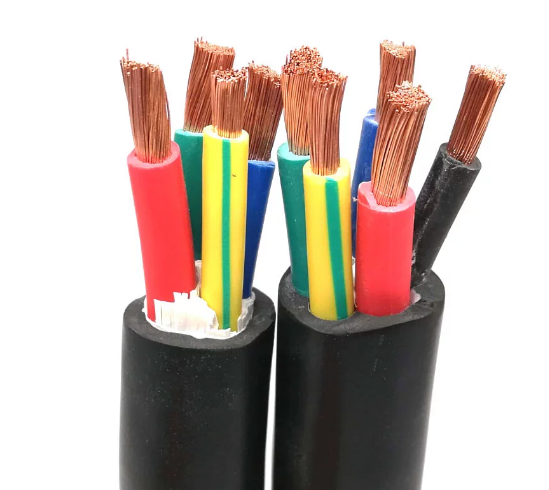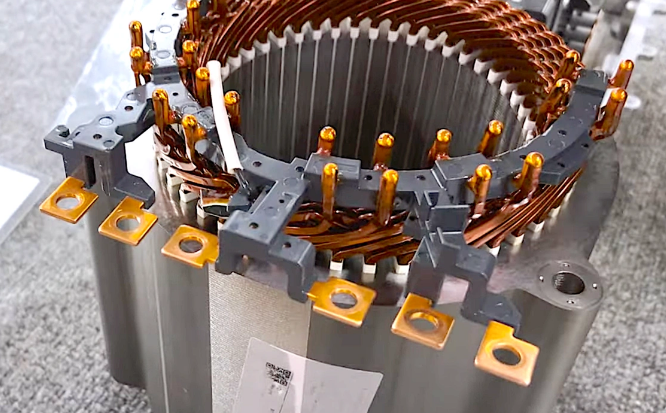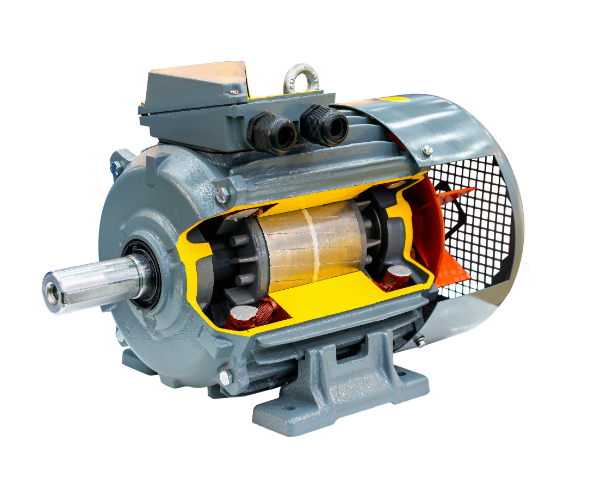Three-phase motors have wide usage in factory automation, agricultural machinery, industrial pumps, and water processing machinery. They achieve an efficiency as high as 90% and their life can go beyond ten years, hence drastically reducing the cost of operation while increasing production at the same ratio.
Role in Factory Automation
The role of a three-phase motor in factory automation is irreplaceable. Their core advantage is their high power and efficiency to meet the various demands of industrial equipment. The power range of the three-phase motors is from 5 kW to 500 kW. They are used for driving complicated equipment, such as conveyor belts, machinery for processing goods, and huge transport equipment on assembly lines. Using three-phase motors allows them to reduce the maintenance periods of the equipment. It may reduce the annual maintenance cost by 20% -30% and directly improve the production efficiency simultaneously.
In the automatic PLC-control system, three-phase motors are also widely used. These actuators combined can respond to an input signal in less than 1 millisecond with high accuracy, hence finding their application in fast-moving production lines. This installation of three-phase motors with CNC systems allows the assembly lines in car manufacturing to manufacture up to 120 cars per hour. A design life of more than 20 years reduces the frequency of replacement and hence decreases operating costs over a long period by about 15%.
Modern production equipment such as cutting and stamping machines has very high demands on speed and torque control. Since it is possible to change the speed of three-phase motors by inverters only, the possibility to control in a very large range of 0 to 5,000 allows the equipment to work stably even under high-load conditions. In temperature control, three-phase motors perform well and can operate up to 12 hours continuously without the cooling system. This is why three-phase motors are used in most industry giants, like Tesla manufacturing plants, to save millions of dollars in operating costs annually due to their durability and reliability.

Role in Agricultural Equipment
The main requirements of three-phase motors in agriculture, especially for implements, are high efficiency and durability. The demand from modern agriculture for more automation keeps rising, and it is in these cases that three-phase motors have power ratings from 30 to 200 kW, enough to drive big equipment like tractors and harvesters. This ensures that they can work for hours on end during busy farming seasons, increasing their operational efficiency by over 50%.
Working together with the rapid development of agricultural automation technology, three-phase motors have broad applications in feed processing equipment. Crushers and mixers work for quite long hours and require the motors to operate at low temperatures. Highly efficient cooling systems guarantee this in three-phase motors, and that makes the equipment last about 10 years. In poultry and livestock farming, it provides much-needed airflow through the ventilation system. It is estimated that when three-phase motors are used, fans can run 24/7 and thereby help reduce environmental control costs by about 20%. Most large farms employ an automatic feeding system with feeding driven by three-phase motors; these can feed thousands of poultry per hour. This greatly reduces labor costs and distributes feed quite evenly.
Demand for Industrial Pumps and Compressors
Demands for three-phase motors in industrial pumps and compressors become very critical since such operating requirements tend mostly to be long-duration, high-power support. Their power in industrial pumps lies within the range of 15 kW to 200 kW, quite appropriate for chemical, petroleum, and water treatment industries due to their continuous operations. Since three-phase motors have a higher speed and torque compared to single-phase motors, their requirements would balance with the demands for compressed air and fluid transmission.
Many industrial pumps work in high-pressure conditions. A water treatment plant pump requires as high a working pressure as 10 MPa, meaning that it requires the motor to bear a huge load. It is estimated that the energy efficiency of pump equipment driven by three-phase motors has improved by about 25% compared to traditional motors, reducing operating costs and being especially suitable for industries where costs must be curbed.
Three-phase motors applied on devices such as air compressors and refrigeration compressors are designed in such a way that they require a constant power supply to ensure that gases or liquids are effectively compressed with their temperatures kept in check, even when the pressure is high. In industrial refrigeration, a three-phase motor compressor can enhance production efficiency by up to 20%, thus ensuring optimal cooling while reducing energy consumption.
Application on Metal Processing Machinery
Three-phase motors play a very important role in large-scale equipment, as well as in different kinds of metal-processing machinery. **This high torque allows the machining centers to precisely control the tool speeds in the range normally used between 1,500 and 5,000 RPMs. Effectively, this raises the cutting efficiency and ensures accuracy in processing. For such complicated metal materials like stainless steel and aluminum alloy, the torque could go up to 300 Nm with three-phase motors, which ensure continuity of work under high load conditions.
CNC machines are a core part of metal processing and need precise drive provided by the three-phase motors. Compared with traditional machines, CNC machines equipped with three-phase motors reduce energy consumption by 20% and increase production efficiency by about 30%. Long life can be mainly reflected in the equipment such as lathes and milling machines. The ordinary three-phase motor has a life of more than ten years with normal maintenance, which reduces the cost brought about by frequent changes of motors.

Environmental Protection and Water Treatment Equipment
For environmental protection and water treatment equipment, the three-phase motors are highly valued because of their effectiveness and durability. A three-phase motor, in general, applied within wastewater treatment, has power ratings that range between 15 to 100 kW and is expected to deliver high performance even on 24-hour continuous operation. Three-phase motors are applied within pumping and filtration systems that cater to the needs of fast filtration and purification of large volumes of water to make the discharge within the set limits by the regulatory standards. These systems generally finish their cycles in a matter of hours and work effectively to address urban and industrial wastewater treatment requirements.
The basic composition of water treatment equipment includes fans and blowers. In operation, these machines may supply constant airflow by a three-phase motor, increase oxygen in the water, and decompose harmful substances. The fan equipment with three-phase motors is about 30% more energy-efficient compared to single-phase motor systems and thus offers considerable savings in operational costs. Industry giants like Siemens and ABB use three-phase motors in their water treatment equipment to cope with high efficiency and energy-saving environmental requirements.
In the process of industrial wastewater treatment, centrifugal pumps with three-phase motors are capable of delivering the flow rate in thousands of liters per minute, thus guaranteeing efficient separation of sewage and impurities. A centrifugal pump has over a ten-year service life, which will reduce replacement frequency and maintenance costs many times, especially if there is a need for immediate treatment of large volumes continuously. The wastewater treatment projects use this three-phase motor technology in treating wastewater to save about 25% annually in energy costs.








